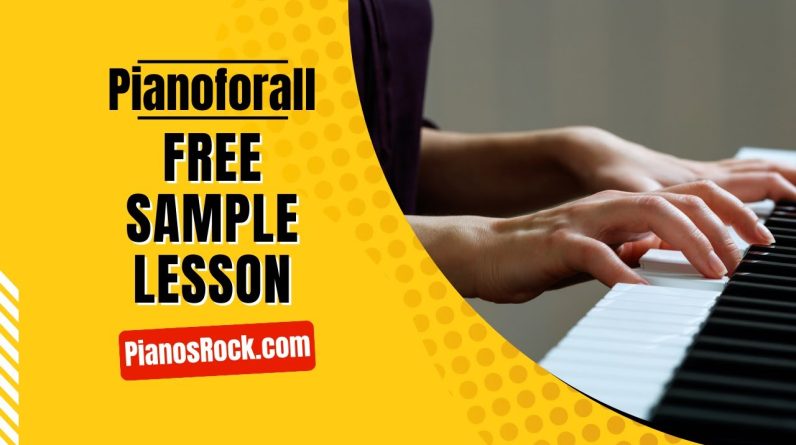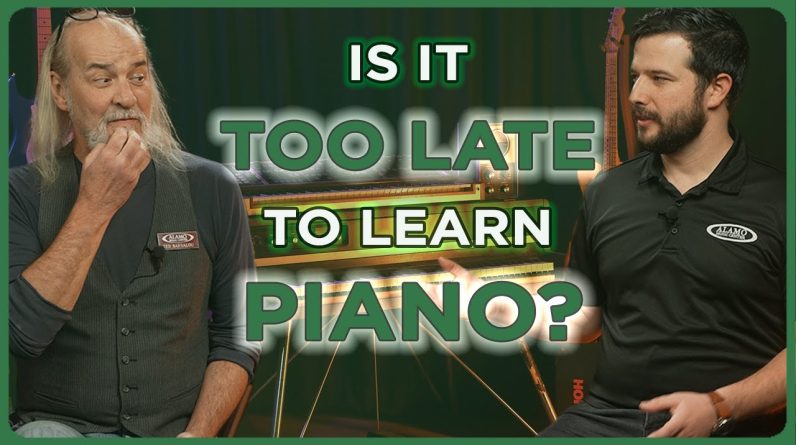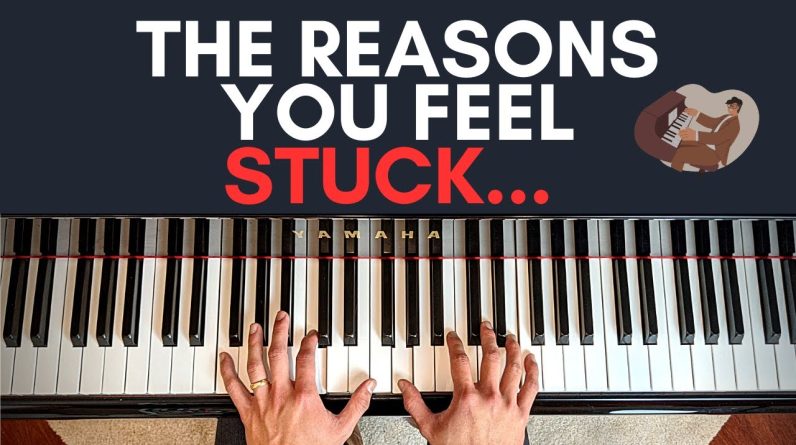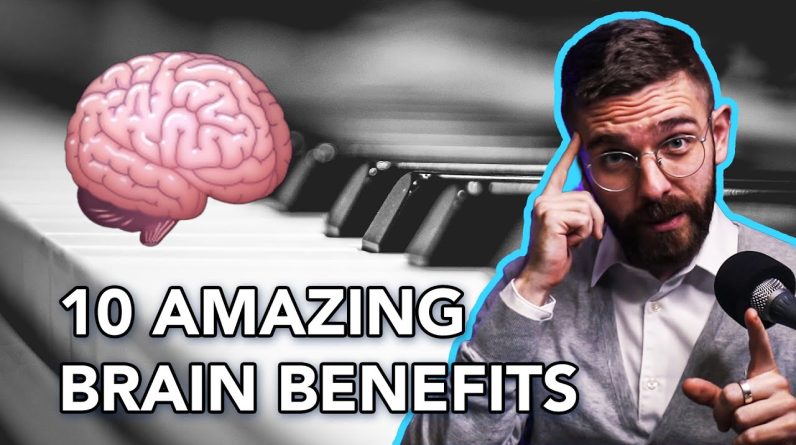What is the best practice method? What should you prioritize when practicing piano?
How about you? How does your practice session look like?
Want to have one-to-one lessons with Jazer? Sign up here:
https://forms.gle/BoC1qb7TWanw1wK7A
Want to own the metronome watch Jazer is wearing? Use the promo code ’JAZER20’ to get 20% off- https://www.soundbrenner.com/jazer
You love practicing piano, but you are unsure of how to structure it. How much time should be dedicated to technique, sight reading, or ear training? Learning a new piece or maybe mastering an already learned piece? How should I split up all these things and which one should I prioritize? In this video, I want to share with you the way I currently practice, and I recommend you try this too.
Every practice method or strategy has its pros and cons. So, if you have your own practice method, please share it in the comments so we can all read and learn from each other.
In an average 60 minutes of piano practice, my rough guidelines would be to have about five minutes of warm-up. I would then have about 10 minutes of sheet music reading. I would then do about 40 minutes of slow and deep practice, and then the last five minutes can be for a bit of fun.
Let’s talk about each section more in depth.
In the first five minutes, this is the warm-up time. So, I might be doing something like scales or I could be working on things such as Hanon. Usually, when we play pieces, we like to kind of express our emotions within the pieces. When I’m doing my five-minute warm-ups, I usually am pretty unemotional, so it’s very kind of left-brain logical thinking.
I try to sync up my hands, sync up my brain, and my body to make sure everything is very, very precise. So, let’s say in the Hanon exercise, when I’m not warmed up, I might play something like that. So, this is the time that in this warm-up, I try to get everything very, very precise. Oh, as you can see, sometimes in exercises like Hanon, I also like to accent certain parts, and the reasoning for that is to try to be as precise and as mathematical as possible, at least for the warm-up.
I then move on to some sheet music reading.
So, I usually either sight-read something that’s completely new to me, sometimes I might even read music that I’ve learned before. I find that in my 20 years of piano playing, lots of ups and downs, sight-reading is something that is so fundamental to a pianist’s sort of toolset that I really prioritize it more than ever these days. When you have good sight-reading, you learn each new piece much faster. So, imagine if you’re someone that has good sight-reading and you learn 10 pieces rather than two pieces in a year, learning those 10 pieces is then also learning to read another 10 pieces, which then propels you even more to read even more things in the next year. It’s a little bit like compound interest.
The more you read, the better you get, the faster you churn out pieces, the more you learn, the more fun the whole piano thing becomes. Reading also helps me keep up with my music theory skills. Okay, I look at things like the time signature, the key signatures, you know, the sharps and the flats. So, reading music is really, really important. I do this for about 10 minutes.
I then move on to 40 minutes, and this is the meat of the practice, which is what I call the slow and deep practice. So, this part is usually for the main piece or pieces that I’m working on. Some of you might be working on one piece, some of you might be working on several. I personally recommend working on a few just to keep things interesting. I find that sometimes, for some reason, if I’m only working on one piece for a lengthy amount of time, I tend to experience a bit of burnout, and I sometimes wish if I just knew, I would have just included a little bit more in my mix so that it keeps things a bit more fresh and interesting.
But, you know, you do you. If you’re working on, let’s say, one piece or song and you’re just really loving it and you can go two hours with it, just go for it. But if you find your practice is starting to feel a little bit routine, it’s not a bad idea to just include a little bit more in that mix. I’m someone that really prioritizes interest. I find that if I work on something that I’m passionate about, I’m more likely to learn something from that experience, and I leave the practice session happy.
And our brains are really simple. When we enjoy something, we release dopamine, and we’re just more likely to then come back to the piano for another practice session next time. So, interest is really important. Whenever you’re practicing piano, please try to include things in there that are actually fun and engaging for you. It’s the only way you’re going to improve.
It’s the only thing that will possibly bring you back to the piano. Find things that are interesting for you and practice them.
Slow and deep practice is a theme that is talked about quite a lot on this channel. It is where, instead of playing through the entire piece fast and making a whole bunch of errors, we’re actually doing very, very small sections, maybe two measures or four measures or eight measures, but prioritizing executing every single note correctly. It’s where every single action is mindful and every single action is conscious.
If you ever catch yourself practicing piano and you sort of have this mental blank, and when you come back into reality, you go, “Oh, whoa, 20 notes have passed, and I don’t even really know what 20 notes I just played,” that’s a sign that we probably need to have just a little bit more mindfulness to our practice. This is where you either need to just slow it down, slow it down to a speed that you can consciously think about each note, or sometimes I like to do variations to keep things interesting for me, to keep my brain sort of on its toes. So, for example, a lot of the times when there are semi-quavers, I would play instead something like long-short, long-short. So, something like changing the rhythm often keeps my brain a little bit more on its toes, so I can’t just mentally blank out as I’m practicing.
In the last five minutes, I usually just have a little bit of fun.
I would either do some improvising or, let’s say, give myself some chords and just try to improvise something for fun. So, just then, I worked with the chords one, three, six, four. I give myself a chord progression, I try to make a little something up. Sometimes, I play through older pieces that I have already mastered. You know, if you want to keep pieces in your hands, you have to practice them.
So, it’s good to retain these pieces that you already learned before, just to spend, you know, a couple of minutes playing through them once or twice. And sometimes, in the fun section, I also like to try some measures of the piece I am learning in the deep and slow practice at concert speed. So, I would take, let’s say, two measures, maybe even one measure, just to try to play it a little bit faster to see if I can handle it, to see if I can control it. Because at least theoretically, if you do use slow and deep practice well, you should be able to play things a little bit faster because of this deeper understanding of how exactly the hands and fingers should move. It’s a very counter-intuitive concept in piano.
When you go slow, you actually are able to play fast much quicker sooner.
- Deck the Halls for Piano Solo – Christmas Sheet Music – Practice Video - November 20, 2025
- Canon in D by Pachelbel | Simplified for Piano Solo | Practice Video - June 22, 2025
- Pianoforall Free Sample Lesson - March 23, 2025








